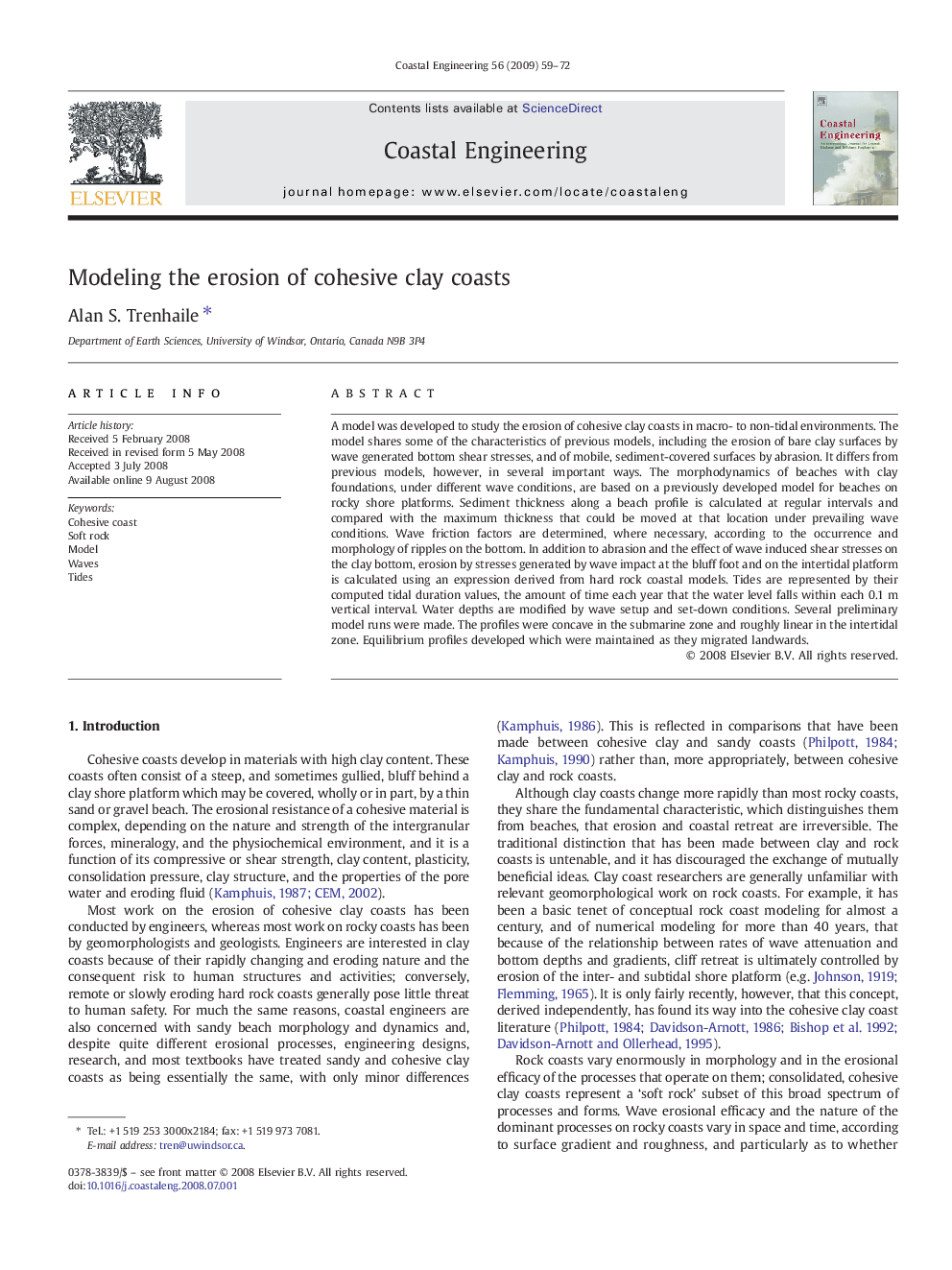| Article ID | Journal | Published Year | Pages | File Type |
|---|---|---|---|---|
| 1721368 | Coastal Engineering | 2009 | 14 Pages |
A model was developed to study the erosion of cohesive clay coasts in macro- to non-tidal environments. The model shares some of the characteristics of previous models, including the erosion of bare clay surfaces by wave generated bottom shear stresses, and of mobile, sediment-covered surfaces by abrasion. It differs from previous models, however, in several important ways. The morphodynamics of beaches with clay foundations, under different wave conditions, are based on a previously developed model for beaches on rocky shore platforms. Sediment thickness along a beach profile is calculated at regular intervals and compared with the maximum thickness that could be moved at that location under prevailing wave conditions. Wave friction factors are determined, where necessary, according to the occurrence and morphology of ripples on the bottom. In addition to abrasion and the effect of wave induced shear stresses on the clay bottom, erosion by stresses generated by wave impact at the bluff foot and on the intertidal platform is calculated using an expression derived from hard rock coastal models. Tides are represented by their computed tidal duration values, the amount of time each year that the water level falls within each 0.1 m vertical interval. Water depths are modified by wave setup and set-down conditions. Several preliminary model runs were made. The profiles were concave in the submarine zone and roughly linear in the intertidal zone. Equilibrium profiles developed which were maintained as they migrated landwards.
